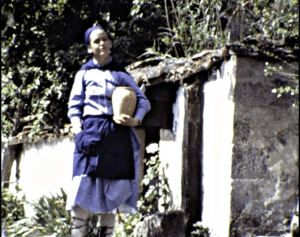
Una niña y una mujer van en el automóvil. La niña se queda dormida y comienza a soñar con la historia de la lechera.
A girl and a woman ride a car. The girl falls asleep and begins dreaming of a milkmaid story.
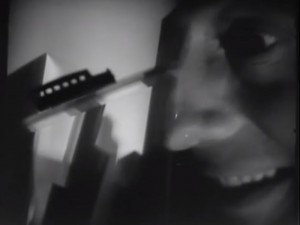
"Robert Florey and Slavko Vorkapich created one of the most creative (particularly in light of its reputed $97 budget) and bleakest of the early avant-garde films. Photographed by Gregg Toland, who would become best known for his work on "Citizen Kane," the film is the time-worn tale of a movie extra (Jules Raucort) marginalized by one casting director after another until he's seen only as a number symbolically appearing on his forehead. The ultra simplistic sets and props, made of toys and cardboard buildings projected like shadows, help to create intricate German Expressionistic cityscapes reminiscent at times of "Metropolis." " National Film Registry.
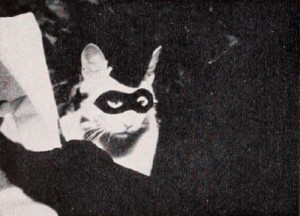
"In The Magic City, Virginia Rodarmor shows a warm and winning appreciation of a child's love for fairy tales. After a delightful opening scene in which Mother pantomimes the end of a bedtime story to her three young ones, we see them being tucked away for the night. The film then pictures the children enacting, in a dream, the tale their mother has just related. A regrettable lack of steady camera support is offset by the sensitive unfolding of the story, keeping it unerringly on a level of pure fantasy. A delightful and characteristic conceit is the sequence in which the witch is transformed into a pure white cat — complete with miniature black mask and peaked hat. The role is played by the family pet with superb and feline aplomb. The Magic City is a rewarding adventure into the difficult realm of motion picture fantasy." Movie Makers, Dec. 1948, 495.
"A short but poignant film of a crippled girl with a toy carousel which becomes very real to her. She dreams of visiting an amusement park." PSA Journal, Nov. 1956, 45.
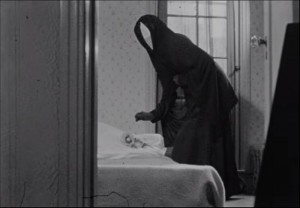
"Meshes of the Afternoon is experimental in nature and exciting in its cinematic development. In it, the producers — Maya Deren and her husband. Alexander Hamid — have been concerned with the inner experiences of an individual. Although one sees on the screen the familiar backgrounds and impedimenta of physical existence, the events which transpire among them, through a summer's afternoon, portray subjective feeling rather than objective incident. Miss Deren's creative use of her camera to suggest these emotions blazes new and stimulating trails in pure cinematography." Movie Makers, Dec. 1945, 497.
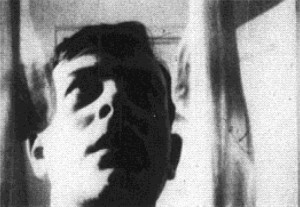
"As the title may indicate, the main character had too much to drink. He responds to a dream of nightmarish proportions and finds things quite confusing. Finally, awakened, he finds the physical surroundings not much different. It all adds to the confusion of a morning after" PSA Journal, Oct. 1961, 48.
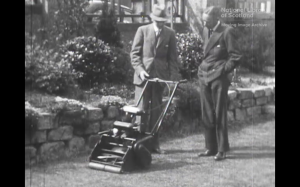
A story of a man who dreams of a rogue lawn motor coming to wreak havoc in his house.
"An animated puppet film. It shows children dreaming and then the puppets start to dance. A very short film but delightful for all ages" PSA Journal, Nov. 1956, 22.
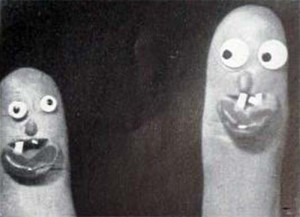
"A perfectly delightful holiday in personal filming, replete with humor, and imagination, is the comedy, Nite Life, produced by J. Kinney Moore, entirely in Kodachrome and, what is more, almost entirely in interior Kodachrome, by artificial light. Mr. Moore, in his work, refutes the contention, sometimes heard, that the amateur should be wary of film comedy. And, beside negotiating this pinnacle successfully, the producer has added an outstanding technical handling of Kodachrome, as well as a highly diverting and intelligent use of the various camera illusions it is possible to produce with the aid of modern 16mm. equipment. The obvious zest and pleasure with which the actor producer entered into the creation of this film add immeasurably to its value as a genuine document of personal filming achievement. Examples of carefully planned and executed trick photography follow one another in such rapid succession in the film that the spectator is left time only to gasp. However, these tricks are not executed simply for their own sake, but strictly in accordance with the furtherance of the plot. It must be said that, in the second part of the film, the author does yield slightly to the temptation of attenuating the action somewhat in order to spin out his bag of tricks. But the film as a whole is so delightful that any audience could easily forgive this small shortcoming." Movie Makers, Dec. 1936, 542.
"J. F. Hollywood, ACL, built his 8mm. film, Opera Night, around a child's dream and which involved magic. The tricks were accomplished by stopping the camera, holding the action, making the desired change in the subject and starting the camera again." Movie Makers, Dec. 1935, 527.
"Joseph F. Hollywood of New York City entered 'Opera Night,' shot entirely indoors with some trick stop action built around his children. A deserving effort that receives honorable mention." American Cinematographer, Feb. 1936, 73.
Total Pages: 4